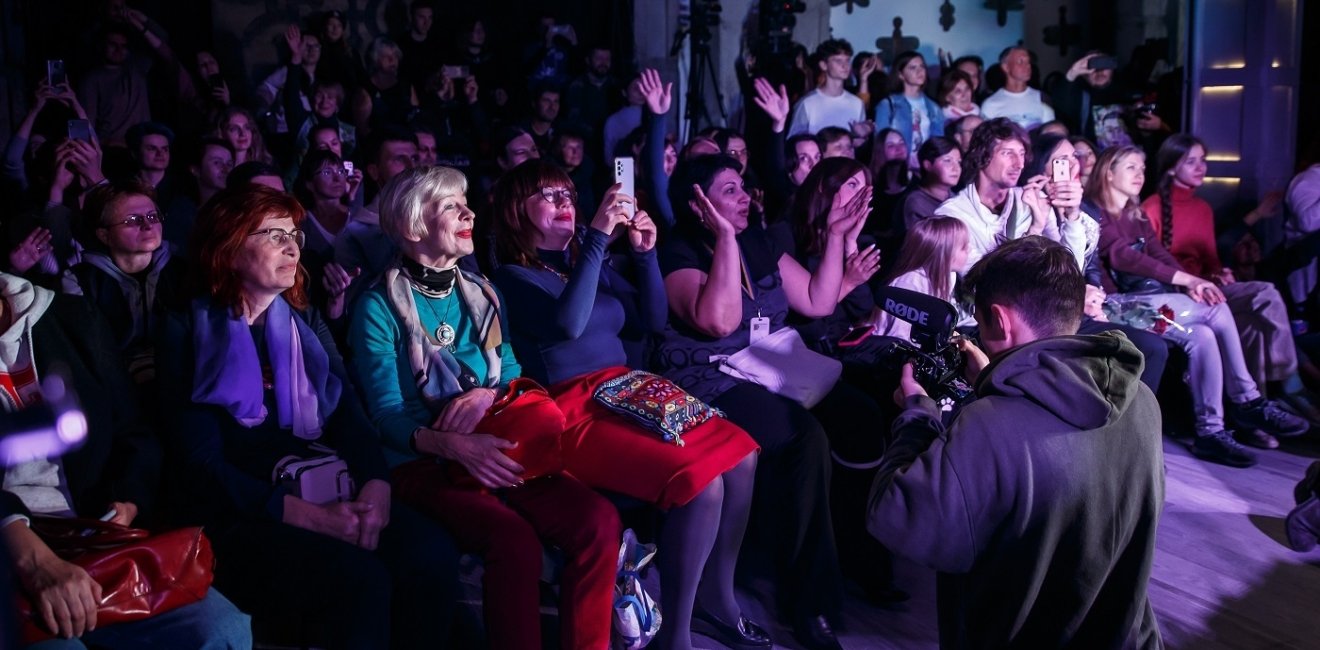
A blog of the Kennan Institute
Ukraine’s second largest city, Kharkiv, has been the object of savage Russian attack for over a year. Only about 25 miles from the Russian border, the city and its suburbs were among the first targets of invading forces. Ukrainian defenders drove the attackers back in heavy fighting during the war’s initial weeks and launched a successful counter offensive by spring. But the city remained within range of Russian rockets and, since last autumn, has been devastated by constant bombardment, which has destroyed residential areas, damaged major public buildings like the university and opera house, and degraded essential infrastructure.
Music would seem to be a minor concern under such desperate conditions. Just the opposite has been the case. A recent video featuring four members of the Kharkiv National Academic Opera and Ballet Theatre—Vira Lyrovchenko, Natalia Babaruk, Viktor Viryasov, and Tetiana Odrynska—streamed to a January 18 cultural charity evening in Zurich celebrating the work of Swiss Aid to Ukraine (SA2U). Narrated by Kharkiv professor Yulia Nikolaevska, the 11-minute documentary tours some of the city’s staggering destruction to the sounds of the beautiful music which has sustained the city’s spirits throughout this ordeal.
Nikolaevska begins in the courtyard of her own destroyed apartment building. She recounts how, on the first morning of the war, residents didn’t know what to do and gathered in the basement to escape the constant bombardment. Over the next days of terror, Nikoalevska and her neighbors devised a makeshift bomb shelter, complete with cots and a place to prepare food. As the residents ran downstairs in fright, a young girl in the building carried her most prized possession, a violin. She immediately opened the case up and began to play, to drive away her own fears and those of her neighbors. Her neighbors built her a stage on which to play. Music became a survival tool from the war’s very first moments.
Nikolaevska’s building was not unusual. As residents hunkered down while their homes above were being bombarded and were collapsing, music flowed out of basements all over town. The city’s professional musicians, pop groups, and amateur ensembles began to make the rounds of metro stations, public shelters, and buildings like Nikolaevska’s. Over time, connections with charitable groups such as SA2U helped support these impromptu concerts.
A playlist of favorite tunes emerged with each gathering. Nikolaevska tells the story of tunes which have become bomb shelter favorites while Lyrovchenko, Babaruk, Viryasaov, and Orynska hauntingly play them. Many were well-known, sentimental, patriotic, and easily sung tunes such as “Oh, in the Meadow,” about the red viburnum of folklore (“Chervona kalyna”). Arranged here by Vladimir Bogatyryov for string quartet, this tune was penned in the 17th century by relatives of Cossack Hetman Bohdan Khmelnitsky. Members of early 20th century Ukrainian independence groups made it their anthem. Performers in all musical genres immediately turned to it when the Russians invaded a year ago. The video shows Russian rocket attacks on civilian areas as the quartet plays this jaunty melody from the safety of a basement air raid shelter.
The lyrical Ukrainian folk poem “What a Moonlit Night” has similarly enjoyed popularity for more than a century, set to a variety of music. The work was based on Mykhailo Gogol’s poem “Evenings on a Farm Near Dykanka.” The performance for this video draws on Ukrainian theater founder Mykhailo Starytskyi’s 20th century poetic version, “What a Moonlit, Clear, Starry Night,” which has served as a patriotic tune at times of national threat. The video recalls the tune’s March 26, 2022, string quartet performance in a Kharkiv metro station that had been converted into an air raid bunker.
Tunes from Myroslav Skoryk’s score from the movie High Pass by Sergei Parajanov have become symbolic of Ukrainian indestructability. Ukrainians quickly embraced this music as a soundtrack of praise for their resistance and it has become a favorite tune in Kharkiv’s shelters and basements during air raids. The version played by the Opera and Ballet Theater’s quartet provides a haunting backdrop to scenes of the destruction exacted on so much of Kharkiv over the past year.
The musicians featured in the video have remained in Kharkiv. They move about the city playing charity concerts wherever they can, to lend strength to those who have remained. This stunning story reveals the magic of music in the most trying of times.
The opinions expressed in this article are those solely of the author and do not reflect the views of the Kennan Institute.
Author

Former Wilson Center Vice President for Programs (2014-2017); Director of the Comparative Urban Studies Program/Urban Sustainability Laboratory (1992-2017); Director of the Kennan Institute for Advanced Russian Studies (1989-2012) and Director of the Program on Global Sustainability and Resilience (2012-2014)

Kennan Institute
After more than 50 years as a vital part of the Wilson Center legacy, the Kennan Institute has become an independent think tank. You can find the current website for the Kennan Institute at kennaninstitute.org. Please look for future announcements about partnership activities between the Wilson Center and the Kennan Institute at Wilson Center Press Room. The Kennan Institute is the premier US center for advanced research on Eurasia and the oldest and largest regional program at the Woodrow Wilson International Center for Scholars. The Kennan Institute is committed to improving American understanding of Russia, Ukraine, Central Asia, the South Caucasus, and the surrounding region through research and exchange. Read more

Explore More in Focus Ukraine
Browse Focus Ukraine
Talking to the Dead to Heal the Living

Ukrainian Issue in Polish Elections




